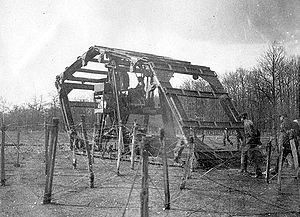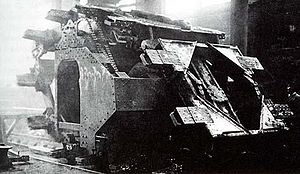1914-1915 Boirault “Anti-Barbed-Wire” Machine
- Story Cars

- Dec 18, 2023
- 2 min read
The Boirault machine, a French experimental landship designed in 1914 and constructed in early 1915, stands as an intriguing precursor to the modern tank. Dubbed as an "ancestor of the tank," this rhomboid-shaped vehicle lacked armor, featuring a single overhead track.
During the trench warfare of World War I, the need arose for a versatile, heavily armed vehicle capable of navigating diverse terrains and overcoming enemy defenses.
The initial design by French engineer Louis Boirault aimed to create a machine capable of flattening barbed wire defenses and traversing irregular battlefield terrain. This first version, constructed in January 1915, featured a unique track system driven by an 80 hp petrol engine.
However, this prototype proved fragile, slow, and challenging to maneuver. Despite modifications and subsequent trials, including improvements in flattening obstacles, the machine faced issues with visibility, noise, vulnerability, and limited maneuverability.
A more compact and slightly improved model was developed in 1916, featuring some level of steering control. Although it exhibited impressive strength, crossing obstacles like barbed wire and trenches, its low speed and imprecise steering rendered it ineffective.
The Boirault machine's project was eventually abandoned as conventional tank development gained momentum. The French arms manufacturer Schneider & Co. pursued the production of tanks that eventually saw deployment on the battlefield.
The Boirault machine, despite its innovative attempts, faced insurmountable challenges in practical application. Its significance lies in its contribution to early armored vehicle development, ultimately paving the way for the evolution of tanks during World War I.
Sources:
Gougaud, A. L'Aube de la Gloire, Les Autos-Mitrailleuses et les Chars Français pendant la Grande Guerre, 1987, Musée des Blindés.
Gudmundsson, B. I. On Armor, Greenwood Publishing Group, 2004.
François Vauvillier, "L'Aube du char en France — L'idée de l'engin du no man's land avant Estienne", Tank Zone 2, 2008.





































Comments